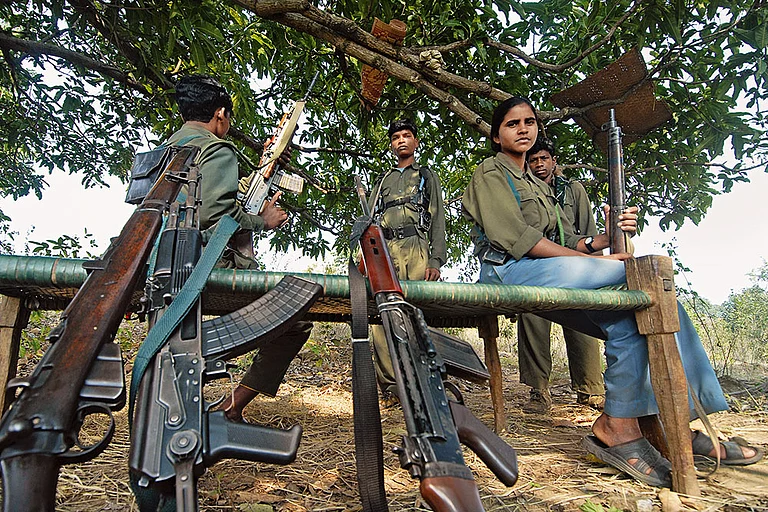Rooted in socio-economic inequality, the Maoist movement has over decades evolved and fractured into various factions, with some engaging in violence while others aligning based on politics.
How it began
The Naxal movement is named after an uprising in 1967 in the Naxalbari village of West Bengal. The landless farmers of the village had grown frustrated with the exploitative feudal practices of their landlords and eventually this grew into a violent confrontation between the two groups. This first incident was led by Charu Majumdar and Kanu Sanyal.
While Naxals believe in armed struggle, the movement is ideologically based on Maoism and the teachings of Mao Zedong. Members of the group believed that violence was the only means by which they could overthrow their semi-feudal landlords.
The movement split from the Communist Party of India (Marxist) in the 1960s to form the Communist Party of India (Marxist-Leninist) (CPI-ML). Thereafter, the movement split off into other groups.
The 90s
The 1990s saw the movement regain popularity, especially in Chhattisgarh and Jharkhand. The various factions united under the Maoist banner. Most notably, in 2004, the People’s War Group (PWG) and the Maoist Communist Centre of India (MCCI) merged, resulting in the Communist Party of India (Maoist) or CPI (Maoist) being formed.
Positioning itself as a defender of tribal rights, the movement was aimed at creating a liberated zone in India’s Red Corridor, land which stretches from West Bengal through Jharkhand, Chhattisgarh, Odisha, Maharashtra, and Andhra Pradesh. The insurgency thrived in dense forests and tribal-dominated areas; places where the government did not have much of a presence. At its peak, the Maoists were present in 180 districts in 10 Indian states, which is about 40 per cent of India’s geographical area. In 2018, the number of "most affected" and "total affected" districts had come down to 35 and 126, and in July 2021, it was reported the number of affected districts had come down to 25 and 70.
The CPI (Maoist) advocated for land reforms, against tribal-displacement, and any development projects such as mining and dams, which could impact tribal lives and livelihoods.
The Government’s Response
The Maoist insurgency has been called “the greatest internal security threat to our country” by former prime minister Manmohan Singh. In response, the UPA government in 2009 launched Operation Green Hunt, and deployed paramilitary forces to dismantle it.
Manmohan also added that development would be the “master remedy” to the insurgency. The UPA government came out with three schemes, the Special Central Assistance (SCA) scheme, Security Related Expenditure (SRE), and Special Infrastructure Scheme (SIS). As of July 2021, Rs 2,698 crore was spent on 10,000 SCA projects, of which 85 per cent were complete. SRE is specially aimed at the "Most affected" districts, under which, in 2014, Rs 1,992 crore has been spent.
The Present
Since 2011, the government has deployed a combination of state suppression, internal leadership disputes, and developmental initiatives to reduce the strength of the insurgents.
The CPI (Maoist) still controls some areas in Chhattisgarh, Jharkhand, Odisha, and Maharashtra, but has lost territory in Andhra Pradesh and West Bengal.
Leadership within the CPI (Maoist) has changed several times, with figures like Muppala Lakshmana Rao (also known as Ganapathy) playing a critical role in the insurgents’ strategy. Ganapathy resigned in 2018, and Nambala Keshava Rao (alias Basavaraj) took over as the general secretary of CPI (Maoist).
Despite its waning influence, the CPI (Maoist) still have a strong network that operates the "liberated zones." The state of Chhattisgarh, especially Bastar, continues to be a hotspot for Maoists. Human rights groups have criticised the government for accusations of extrajudicial killings, arbitrary detentions, and harassment of tribals.
On September 20, this year, Union Home Minister Amit Shah said that the Naxals must give up violence, lay down arms and surrender. Otherwise, he said, there would an all-out operation against them.
Speaking to 55 victims of Naxal violence from Chhattisgarh at his Delhi residence, Shah also asserted that “Maoists will take their last breath by March 31, 2026.” Prime Minister Narendra Modi has decided that Naxal violence and ideology will be wiped out from the country, he added.



























